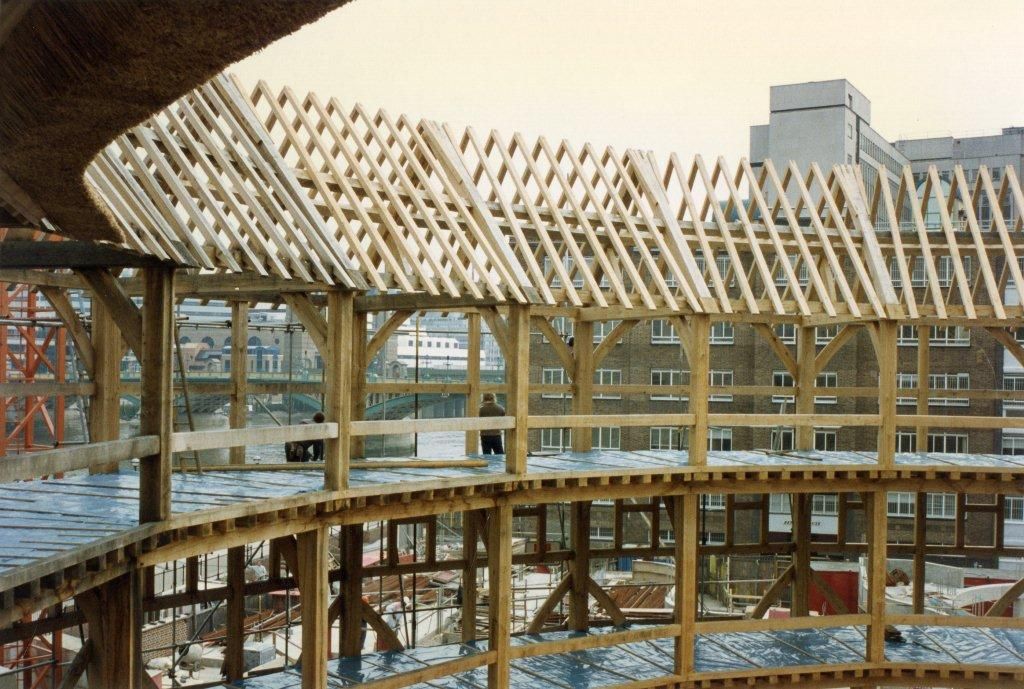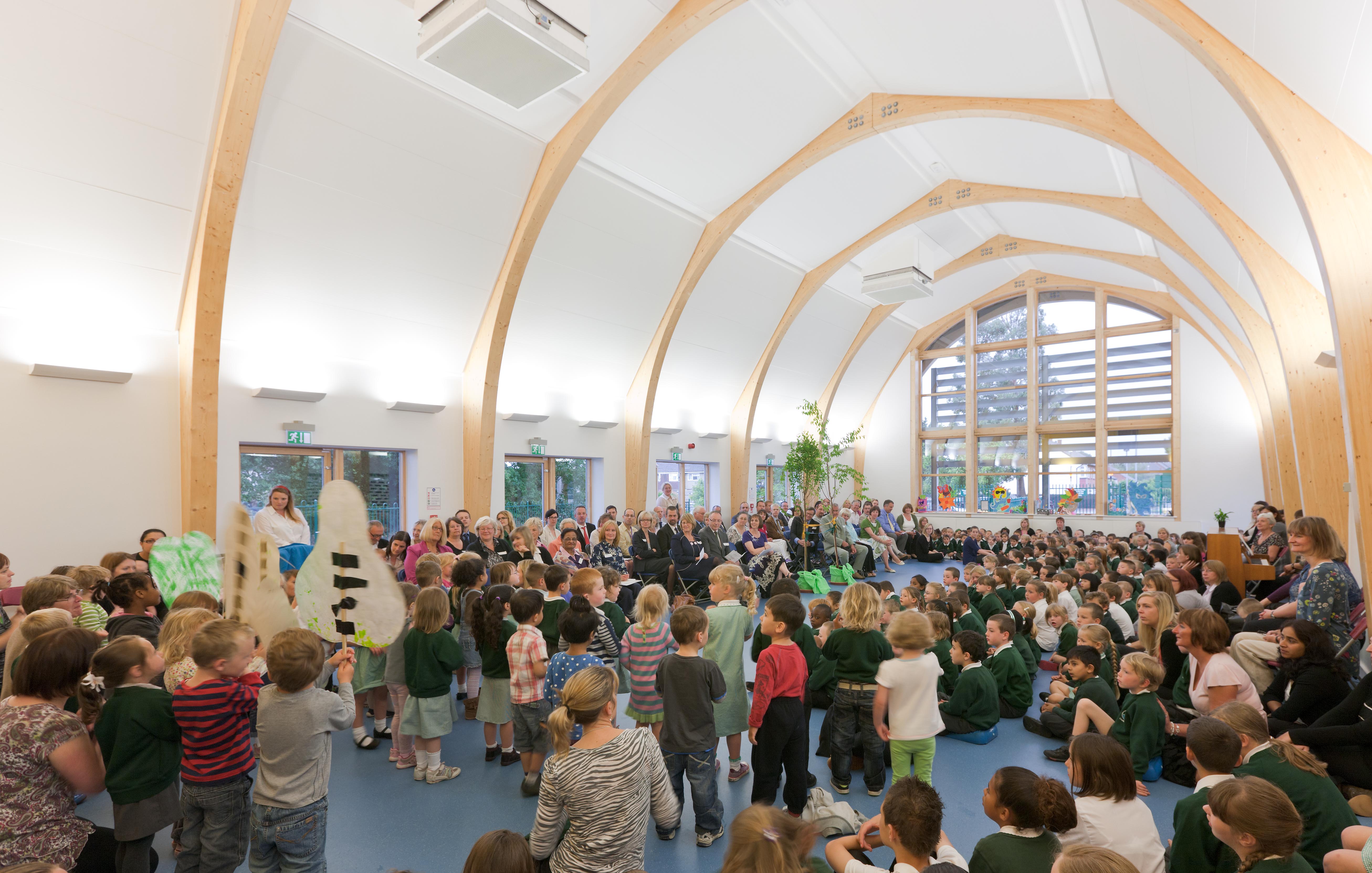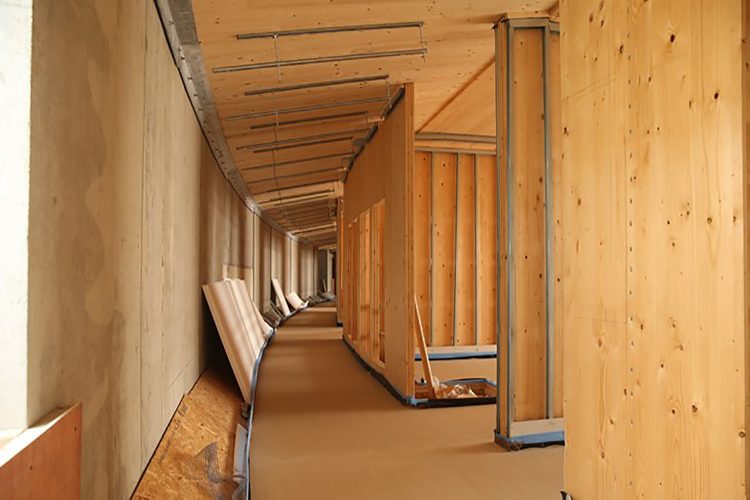In our previous blog, we discussed the pros and cons of concrete, where one of its primary flaws is its contribution to global greenhouse gas emissions. Lots of CO2 is emitted through concrete and cement production.
Are there any organic replacements for the substance then? Why aren’t our buildings made of wood? In contrast to concrete, it may not be as easy to name an iconic structure in the capital where wood or timber is the dominant element.
There is one though: the reconstructed Shakespeare Globe in Southwark. The so-called ‘wooden O’ was made from an oak frame structure, a thatched roof and lime plaster infill panels. Sam Wanamaker, the actor and director behind the reconstruction, insisted on recreating a timber frame, as was the case in the original mediaeval theatre.

However, government regulations were not easy to overcome and remarkably, the Globe was the first timber-frame building to be allowed in central London since the great fire of 1666!
The combustibility of the material remains a significant reason that prevents wood to be used in England on the scale that it’s employed in countries like Canada or New Zealand, where timber frame claims 90% of market share compared to concrete, steel, and masonry. With the Grenfell disaster still lingering in public memory, in 2021, Sadiq Khan introduced a ban on combustible materials being used in external walls for all residential development.
So what, then, is timber good for?
The headline advantage of wood in our current era is its sustainability and renewability. Timber harvest and modification is nowhere as polluting as cement and brick production. More importantly, as trees are grown (with proper forest management) to produce timber, they can even absorb and store atmospheric carbon within themselves – at roughly a tonne of CO2 inside a cubic metre of wood! Thus, compared to other structures, wooden ones have significantly lower ‘embodied carbon’, meaning greenhouse gas emission arising from manufacturing, transportation, installation, maintenance, and disposal of building materials. This statistic, measured in most of our projects at Lyons O’Neill, is a critical indicator of a building’s environmental impact, but has been under-reported and under-accounted for until recently.

At the moment, the material’s most prevalent use in creating structure. According to a report last year, around 23% of new English homes use timber frames compared to 75% in Scotland, which can capture over one million tonnes of CO2 a year as a result. More progress can be made there, but the greater challenge is incorporating timber in commercial and industrial construction on larger scales and with stricter safety standards.
Cross-laminated timber (CLT) is a relatively recent innovation to answer the challenge. As a type of ‘engineered wood’ made up of multiple layers glued together, engineers have been able to rely on its strength to withstand heavy loads. Some architectural firms are using this new material to create fully wooden office buildings. Lyons O’Neill also has designed many projects with this material, including the CLT roof structure for the International Presbyterian Church in West Ealing.

Other arguments exist. There is also an aesthetic case for using wood as the internal cover of a building. Kengo Kuma, the Japanese architect who covered the inside of the V&A Dundee with oak panels, commented that they convey warmth, welcome and airy lightness. Being inside the Globe is said to be akin to a wooden hug. Additionally, as a porous material, the substance can contribute to regulating airflow, which makes houses cooler and more resistant to the mould that plagues concrete 20th-century buildings.
While cost and safety considerations are still rightly amongst the highest priorities, some more enthusiasm towards timber might be warranted as we greet ever hotter summers in a changing climate and as tree-planting ramps up as a dominant carbon offset measure. We look forward to seeing and contributing to more innovative timber buildings very soon.

